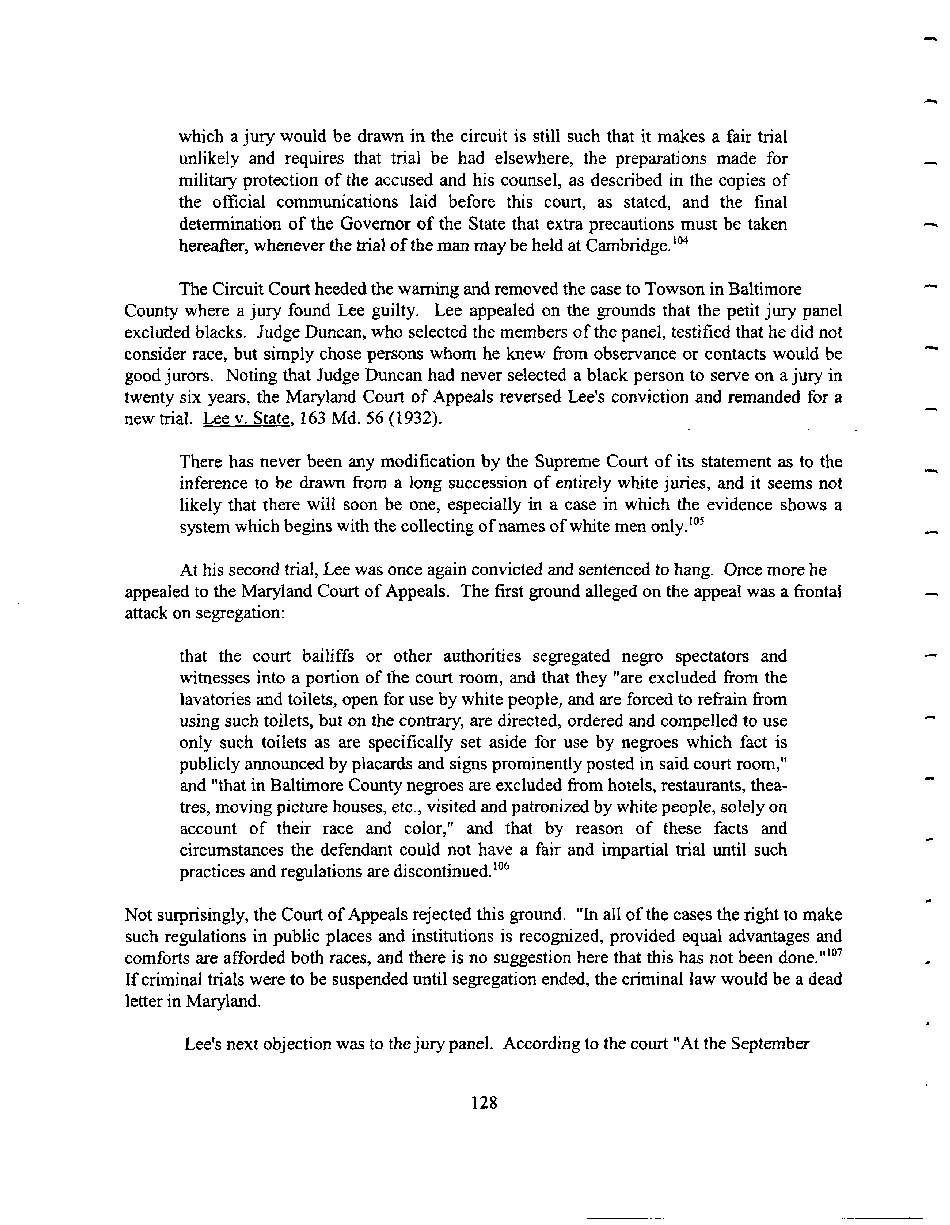|
which a jury would be drawn in the circuit is still such that it makes a fair trial
unlikely and requires that trial be had elsewhere, the preparations made for
military protection of the accused and his counsel, as described in the copies of
the official communications laid before this court, as stated, and the final
determination of the Governor of the State that extra precautions must be taken
hereafter, whenever the trial of the man may be held at Cambridge.104
The Circuit Court heeded the warning and removed the case to Towson in Baltimore
County where a jury found Lee guilty. Lee appealed on the grounds that the petit jury panel
excluded blacks. Judge Duncan, who selected the members of the panel, testified that he did not
consider race, but simply chose persons whom he knew from observance or contacts would be
good jurors. Noting that Judge Duncan had never selected a black person to serve on a jury in
twenty six years, the Maryland Court of Appeals reversed Lee's conviction and remanded for a
new trial. Lee v. State. 163 Md. 56 (1932).
There has never been any modification by the Supreme Court of its statement as to the
inference to be drawn from a long succession of entirely white juries, and it seems not
likely that there will soon be one, especially in a case in which the evidence shows a
system which begins with the collecting of names of white men only.105
At his second trial, Lee was once again convicted and sentenced to hang. Once more he
appealed to the Maryland Court of Appeals. The first ground alleged on the appeal was a frontal
attack on segregation:
that the court bailiffs or other authorities segregated negro spectators and
witnesses into a portion of the court room, and that they "are excluded from the
lavatories and toilets, open for use by white people, and are forced to refrain from
using such toilets, but on the contrary, are directed, ordered and compelled to use
only such toilets as are specifically set aside for use by negroes which fact is
publicly announced by placards and signs prominently posted in said court room,"
and "that in Baltimore County negroes are excluded from hotels, restaurants, thea-
tres, moving picture houses, etc., visited and patronized by white people, solely on
account of their race and color," and that by reason of these facts and
circumstances the defendant could not have a fair and impartial trial until such
practices and regulations are discontinued.106
Not surprisingly, the Court of Appeals rejected this ground. "In all of the cases the right to make
such regulations in public places and institutions is recognized, provided equal advantages and
comforts are afforded both races, and there is no suggestion here that this has not been done."107
If criminal trials were to be suspended until segregation ended, the criminal law would be a dead
letter in Maryland.
Lee's next objection was to the jury panel. According to the court "At the September
128
�
|

